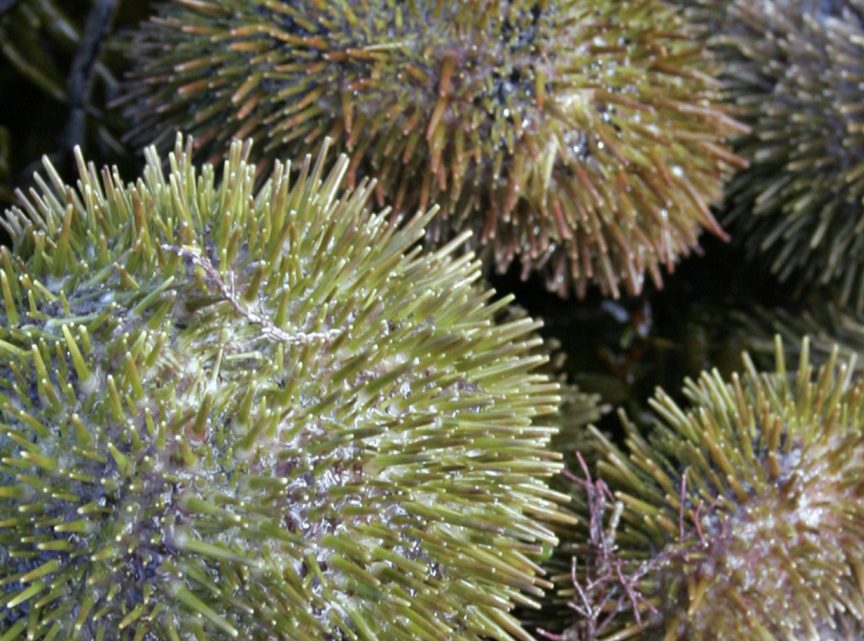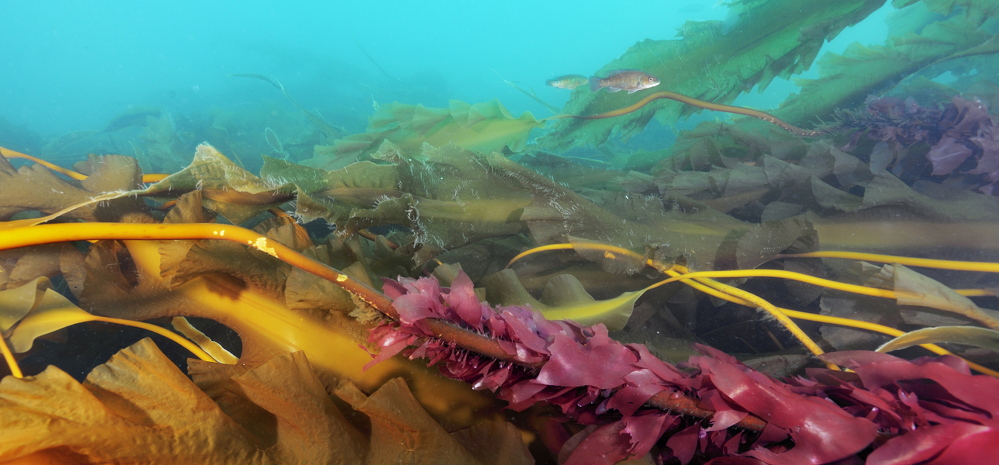What do First Nation villages in Quebec, barren kelp beds in Western Australia, Japanese seafood giant Mitsubishi and a Norwegian investment firm all have in common? The humble sea urchin, and restoring the underwater kelp forests the voracious creature feeds on.
In many parts of the world, sea urchin populations have rebounded and they are systematically clear-cutting kelp forests. Once that happens, they stop producing uni, the roe that sells for $200 a pound. But they survive in a hibernation state, preventing kelp from regrowing. Sea urchin divers leave them alone because the urchins are no longer profitable to harvest.
That’s the problem Brian Tsuyoshi Takeda set out to solve when he founded Urchinomics, a revolutionary way to farm sea urchins from the barrens by feeding them a kelp-based food product that triggers production of uni in weeks rather than months.
Urchinomics then monitors the kelp forest restoration process in the area where the farming takes place.
Takeda’s brainchild is in the trial stage today in Quebec and the Canadian Maritimes, British Columbia, Australia and Japan. It works where the sea urchin ecosystem has been affected by environmental forces that eliminate the animals that eat sea urchins.
On the North American west coast, starfish wasting disease killed a major predator of urchins and the population of the spiny shellfish spiked to the point of clear-cutting the kelp beds. The same is happening, for reasons that include global warming and overfishing of other species, in Australia, Japan, Europe, South America and elsewhere.
In order to make this work, Takeda needed to come up with an alternative feed that provided the same nutrients as kelp. Enter Nofima, a leading food science and research firm in Norway that had developed a kelp-based food for farmed urchins.
Takeda’s Kaston International, an investment firm that owns rights to Urchinomics and whose president is Takeda, partnered with Nofima to share the proprietary formula with others who are restoring kelp beds and farming urchins.
TRIGGERING ROE GROWTH
In trials over the past few years, the special feed triggers roe growth of 25 percent – the ideal ratio for commercial sales – in 12-16 weeks.
Last June Mitsubishi’s Nosan Corp. sent a group of scientists to Norway to learn about the feed and its application in Japan, where kelp beds on the west coast were devastated by the 2011 tsunami.
Last November, Takeda signed an agreement with the Ekuanitshit Nation in Quebec to begin a pilot project. The 400-member band lives on an island and struggles economically.
Takeda believes that the project could offer them a lifeline. “If they succeed, it will give young people an economic base without (moving) into the cities,” he says.
Canada’s Department of Fisheries and Oceans began a trial this year in northern Vancouver Island. The DFO study will use about 2,000 green and 1,000 red urchins harvested by divers from the Strait of Georgia and fed in trays suspended in the ocean near the station.
In Australia’s southeast coast, along New South Wales and Victoria to eastern Tasmania, infestations of long-spined sea urchins, likely because of warming oceans and overfishing of predators, are turning undersea kelp forests to barren wastelands. Here, Urchinomics partnered with Hobart’s Institute for Marine and Antarctic Studies and local aquaculture companies to take urchins from the barrens and fatten them on special feeding cages suspended from existing oyster or mussel lines.
PRODUCING MARKET-GRADE UNI
Takeda, who was born in Japan, moved to Canada when he was a child, and now lives with his Norwegian wife in western Norway, says the various pilot projects have produced market-grade uni that has been tested in Tokyo on a trial basis so far.
He expects production will be up to commercial volumes by the end of 2017.
“If all goes well,” Takeda says, “I think Japan will start producing farmed urchins from barrens by Q4 2017. I am hoping Canada would do so as well, but that is entirely dependent on the feed being locally manufactured to our specs by then.”
“We are hoping to sign a licensed feed manufacturing agreement that covers North America by next month.”
Throughout the process of getting sea urchins in production of high-quality roe, Takeda never loses sight of the other goals of his enterprise – improving kelp forest ecosystems and providing meaningful employment in rural communities.
“I think this is perhaps as important as everything else … I think we tackle overfishing in a completely different way,” he said.
Copy the Story LinkSend questions/comments to the editors.




Success. Please wait for the page to reload. If the page does not reload within 5 seconds, please refresh the page.
Enter your email and password to access comments.
Hi, to comment on stories you must . This profile is in addition to your subscription and website login.
Already have a commenting profile? .
Invalid username/password.
Please check your email to confirm and complete your registration.
Only subscribers are eligible to post comments. Please subscribe or login first for digital access. Here’s why.
Use the form below to reset your password. When you've submitted your account email, we will send an email with a reset code.